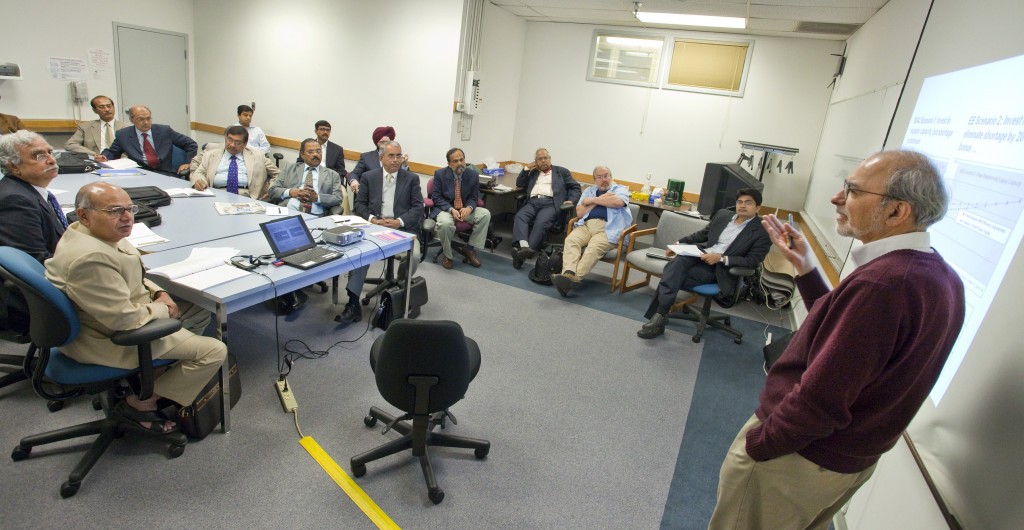Three solid days of talks on feed-in tariffs, decoupling and demand-side management may not sound like exciting stuff to most people, but to a certain group of visitors from India, such topics could not be more welcome. This week, a 20-member delegation, including representatives of electricity regulatory commissions of 13 of India’s 28 states, visited Lawrence Berkeley National Laboratory to learn about California’s leading efforts on energy efficiency and renewable energy.
India suffers from chronic electricity shortages, and as the country’s voracious demand for energy continues to grow due to rising incomes and expanding industrialization and urbanization, the situation is expected to worsen. Berkeley Lab has been working with various public agencies in India to promote energy efficiency there—including greener buildings, a smarter electric grid and more efficient home appliances. Such measures will not only address the shortages but could also reduce pollution and emissions of greenhouse gases.
One of the participants, K.J. Mathew, chairman of the Electricity Regulatory Commission in Kerala state, called the program “first class, informative.” “I didn’t realize the scope and importance of energy efficiency,” he said. “We have about 1 million customers. I’m going back to explore further what we can do, especially in energy efficiency.”

Berkeley Lab scientists Jayant Sathaye (standing) and Amol Phadke (seated, far right) discuss energy efficiency with a visiting group of state electricity regulatory commissioners. (Photo by Roy Kaltschmidt/Berkeley Lab Public Affairs)
Their whirlwind trip included meetings with the California Energy Commission and the California Public Utilities Commission which, along with Berkeley Lab, signed a Memorandum of Understanding with India’s Forum of Regulators last year to consult on best practices in utility-based energy-efficiency programs. Several California utilities, including Pacific Gas & Electric and Southern California Edison, also gave presentations, as did the California Independent System Operator, which runs California’s power grid.
Additionally, the delegation learned about Berkeley Lab’s work with regulators in the Indian state of Maharashtra to set up a demand-side management (DSM) program, which encourages efficiency and conservation by, for example, charging more for electricity at peak times. If more states were to join in, the costs would go down. “They’d be far more open to implementation if given a ready-made solution,” said Berkeley Lab scientist Amol Phadke.
Berkeley Lab senior scientist Jayant Sathaye, one of the main organizers of the visit, said the concept was well received. “There were at least three or four states very keen on pursuing DSM,” he said. “That’s a big plus. We’ve been trying to promote it in other states. One state wasn’t too keen on doing it, said it was a big headache, which is similar to the U.S., where many states are not implementing DSM either.”
S.M. Desalphine, chairman of the Jammu and Kashmir Electricity Regulatory Commission also found the program very useful. “I learned a lot of things we can make use of,” he said. “Our production is much less than demand in our state, and unless we take energy conservation and efficiency measures, we won’t be able to meet demands of our customers. If it’s successful in California, we can make it succeed in India.”
Berkeley Lab is a U.S. Department of Energy (DOE) national laboratory located in Berkeley, California. It conducts unclassified scientific research and is managed by the University of California for the DOE Office of Science. Visit our website at http://www.lbl.gov.
Recent Berkeley Lab articles on India: